- News
- Reviews
- Bikes
- Components
- Bar tape & grips
- Bottom brackets
- Brake & gear cables
- Brake & STI levers
- Brake pads & spares
- Brakes
- Cassettes & freewheels
- Chains
- Chainsets & chainrings
- Derailleurs - front
- Derailleurs - rear
- Forks
- Gear levers & shifters
- Groupsets
- Handlebars & extensions
- Headsets
- Hubs
- Inner tubes
- Pedals
- Quick releases & skewers
- Saddles
- Seatposts
- Stems
- Wheels
- Tyres
- Tubeless valves
- Accessories
- Accessories - misc
- Computer mounts
- Bags
- Bar ends
- Bike bags & cases
- Bottle cages
- Bottles
- Cameras
- Car racks
- Child seats
- Computers
- Glasses
- GPS units
- Helmets
- Lights - front
- Lights - rear
- Lights - sets
- Locks
- Mirrors
- Mudguards
- Racks
- Pumps & CO2 inflators
- Puncture kits
- Reflectives
- Smart watches
- Stands and racks
- Trailers
- Clothing
- Health, fitness and nutrition
- Tools and workshop
- Miscellaneous
- Buyers Guides
- Features
- Forum
- Recommends
- Podcast
review
£2,650.00
VERDICT:
Mountain bike-inspired gravel bike that's nimble, versatile and a whole lot of fun
Nimble
Versatile
Loads of fun
Geometry won't suit all
Weight:
9,030g
Contact:
At road.cc every product is thoroughly tested for as long as it takes to get a proper insight into how well it works. Our reviewers are experienced cyclists that we trust to be objective. While we strive to ensure that opinions expressed are backed up by facts, reviews are by their nature an informed opinion, not a definitive verdict. We don't intentionally try to break anything (except locks) but we do try to look for weak points in any design. The overall score is not just an average of the other scores: it reflects both a product's function and value – with value determined by how a product compares with items of similar spec, quality, and price.
What the road.cc scores meanGood scores are more common than bad, because fortunately good products are more common than bad.
- Exceptional
- Excellent
- Very Good
- Good
- Quite good
- Average
- Not so good
- Poor
- Bad
- Appalling
The Merida Silex+ 6000 is a nimble-handling gravel/adventure bike that offers plenty of versatility along with a comfortable ride courtesy of chunky 650B tyres.
Our sister website off.road.cc reviewed the Silex 9000 a couple of years ago – doesn't time fly? – and now Merida has added two Silex+ bikes to the range.
> Find your nearest dealer here
What is Silex+? It's nothing to do with the geometry or the frame material, which remain the same, it's down to the wheels and tyres.
"We are offering the Silex in two options – the 'classic' Silex, standing on 700C wheels, being the perfect 'all-road' bike which loves lanes, forest tracks and gravel, and the new more 'rugged' Silex+ version, which can easily tackle more demanding terrain due to its more burly 650B wheels and 45mm tyres," says Merida.
If you don't keep this info filed away in your head, 700C wheels have a diameter of 622mm while 650B wheels measure 584mm across and, as Merida says, the smaller wheels allow the fitting of larger tyres into the same frame and fork. Everything else being identical, you can swap between wheel sizes at a later date.
The Silex+ 6000 offers quick handling, making it feel superbly controllable on demanding terrain. Quite an upright riding position helps here too. Rather than going into technical sections head first, you feel like you're sitting high, easily able to survey everything ahead of you and react accordingly (I'll cover the geometry later on).
You might have heard people describe gravel bikes as essentially rigid mountain bikes with drop bars. It's usually not particularly accurate but the Silex+ 6000 matches this description more closely than any other bike I've ridden. Some gravel bikes are great at bowling along at high speed but feel ponderous and awkward through tight twists and turns and steep descents; they'll grudgingly get involved, but they're not really into it. In contrast, the Silex+ feels ideally suited to this stuff. The more mountain bike-ish the tracks and trails you're riding, the better it feels.
Coming in at 9.03g – call it 9kg for cash – the Silex+ 6000 is a reasonable weight if not mega-light (Merida claims a medium sized frame weight of 1,090g), but it feels reactive enough when you turn on the power and the super-low gearing (for a gravel bike) means you'll be able to climb up pretty much anything, even if you have the bike fully loaded up.
Speaking of that, you get the usual mounts for bottle cages on the seat tube and the down tube, plus two more eyelets on the underside of the down tube, just in front of the bottom bracket. There are mudguard/rack mounts on both the frame and the Merida Silex CF2 carbon fibre fork. I guess that if you're being picky you might like mounts for a bento box on the top tube too, but you don't get them.
All the gears
The Silex+ 6000 features a 1x drivetrain (a single chainring paired up with a wide-ranging cassette, doing away with the need for a front derailleur). It's a SRAM Force 1 system, Force sitting below only Red in the hierarchy, above Rival and Apex.
You get a 38-tooth chainring and an 11-42-tooth cassette, giving you a smallest gear of 23.88in and a largest gear of 91.55in (with the 650B wheels and 45mm tyres fitted). If those figures don't mean much to you, a compact chainset (with 50/34-tooth chainrings) and an 11-32 cassette would give you a range of 28.13in to 120.74in (with the same wheels/tyres fitted). In other words, the Silex's lowest gear is small and you probably won't get much use out of it when your bike is unladen, although it could come in very useful when loaded up for a night (or longer) away.
At the top end, pedalling at 110rpm in 38x11 is going to get you to 30mph, so hit a long, open descent and you're going to run out of gears. Mind you, if you're anything like me you'll find that 30mph on gravel feels more like 50mph on tarmac, so you won't mind too much if you get the chance to sit tight and concentrate on avoiding the potholes.
As mentioned up top, Merida has designed the Silex+ to cope with "demanding terrain" and the gearing reflects that. If you're planning to spend a lot of time on the road, though, you'll likely find the lack of bigger gears limiting. If that's an issue for you, the Silex 7000 (£2,650, the same price as this Silex+ 6000) comes with a 48/31-tooth chainset and an 11-34 cassette. With 700C wheels and 38mm tyres, the largest gear is nearly 120in.
I did my best to get the chain to unship by shifting gear while riding down the rattliest gravel descent I know as fast as possible, but failed. I'm not saying it's impossible to drop the chain but the SRAM Force 1 rear derailleur's one-way roller clutch and the tall, square X-Sync teeth on the chainset hold it in place reliably in my experience. If you ever wanted to switch to a double chainset system some time in the future, the frame comes with the required mount point for a front derailleur.
From my place you can ride about three miles on the road before hitting a super-steep bridleway that opens out onto a gravel track, then a tarmac descent before you turn sharp right and go into the woods, where you'll find all kinds of different trails... The details aren't important but you get the idea! The Silex+ 6000 is perfect for this kind of ride.
It isn't quite as fast as a road bike on the road, it's not quite as surefooted as a mountain bike on trails, but it's good at both and an excellent tool for the job if you like to keep things varied, particularly if you like the technical stuff.
Geometry
Merida has taken a novel approach to geometry with the Silex – novel for a drop handlebar bike, that is, although it has been inspired by mountain bike design – going with a long frame and a short stem. I've been riding the large sized model which has a 530mm seat tube, a super-long 600mm effective top tube and a tall 220mm head tube. The stack is 645mm, the reach is 415mm, the seat tube angle is steep at 74 degrees while the head tube angle is slack at 71 degrees.
Most bikes I ride have a top tube of around 570mm, so the Silex's is considerably longer than usual. I don't think I've ever ridden a bike of any kind with a 600mm top tube before. To counteract this length, Merida specs inline seatposts (the saddle clamp is positioned directly over the centre of the post), 80mm stems across all frame sizes, and a handlebar with top sections that sweep slightly rearwards from the clamp point.
This reins back the distance from saddle to levers while speeding up the steering for technical terrain. That's the idea and it works – the steering feels quick but never twitchy.
I got on very well with that Merida handlebar, incidentally, the drops flaring outwards by 12 degrees so that the ends measure a generous 50cm from centre to centre. You'll really welcome the extra control that this width affords when taking on the rough stuff.
As mentioned, the head tube is long and the stack is high. Merida says it has done this so you don't need to run a big pile of headset spacers underneath your stem, which doesn't look good and adds flex. The downside is that anyone who wants a low and racy front end is out of luck.
I'd usually have the handlebar lower than is easily possible here, so to begin with I was a little sceptical, but I must admit that I got used to positioning my hands on the drops rather than the hoods more than usual, and that's generally a good thing over rough terrain. You get a more secure hold and you can let the bike get on with finding its way through the lumps and bumps.
I found the higher than normal front end to be a compromise on the road, though, where I struggled to get into an efficient position for fast, straight-line riding. Along with the wheels/tyres and the gearing, this is a reason why the Silex+ 6000 is better suited to technical terrain than to tarmac.
One other aspect of the geometry that's worth mentioning is that the 650B wheels, even with chunky tyres fitted, drop the whole bike closer to the ground than 700C wheels. Your centre of gravity is a little lower and there's less clearance. I didn't have any issues with grounding pedals while cornering but it is something you might notice on uneven trails.
As ever with geometry, what works well for one person isn't necessarily right for another, so make sure you give the Silex a thorough test ride before parting with your cash. Merida takes an unusual approach here, but it's one that'll definitely work for a lot of people.
Wheels and tyres
I've mentioned the wheels and tyres a few times already. To put a bit more meat on those bones, the wheels comprise VP sealed bearing hubs laced to Merida's 650B Expert CX rims (they're actually made by Jalco; 24mm deep, 19mm internal width) with 32 double-butted black stainless spokes front and rear. They're held in place by 12mm thru-axles. You get one removable lever that you can either leave fitted to an axle (I did that and it never went AWOL) or squirrel away in a pocket. Even if you did lose it, a 6mm hex key does the job equally well.
The wheels have black-on-black graphics so they're fairly anonymous in terms of looks. A quick check over reveals that they're still perfectly round and true after six weeks of mainly gravel and trail use.
A lot of tyre talk goes on in the gravel world – it's getting a bit like F1 – and with good reason because they have such a huge influence on off-road performance. The Silex+ 6000 is fitted with Kenda Flintridge tyres in a 45mm width. We've reviewed the 700 x 35mm version of these tyres on road.cc, Mike Stead calling them "a solid choice for an all-round on-gravel off-road tubeless tyre – mostly for harder surfaces though".
I agree. These are great on anything dry or hardpacked – gravel, for example – but they aren't designed for wet mud. If it's the kind of mud that would stick to your shoes, the shallow central tread fills up and you're in danger of losing traction, especially if you're accelerating hard or tackling a steep incline.
> Buyer's Guide: 25 of the best gravel and adventure tyres
I've been using the Silex over December and January – wet? I had to shoo a nesting reed warbler off the bottom bracket shell at one point – and the rubber just isn't toothy enough to get a firm grasp on anything that isn't well drained. They're good tyres, it's just that you might want to save them for the summer, depending on the surfaces you want to ride.
You could go for tyres up to 50mm wide if you wanted, as long as you stick with the 650B wheels. Of course, the maximum would be less if you switched to larger diameter 700C wheels; you're looking at 42mm at most. Adding mudguards would reduce the maximum tyre width to 35mm. You probably wouldn't want mudguards on this trail-friendly configuration, but you might if you swapped things around a little.
Other details
The carbon fibre Silex frame is distinctive, with a steeply sloping top tube that transforms itself into the seatstays. An internal wedge-type seatpost clamp sits neatly inside the junction with the seat tube.
The frame takes a 30.9mm diameter seatpost, the idea being that you can easily swap to a dropper post if you like (there are plenty of 30.9mm options out there). A dropper post would suit the character of the Silex+ 6000 well.
You're likely to have loads of seatpost extending out of the frame because of that sloping top tube. Combined with the chunky tyres, this means that buzz from the road surface isn't a problem. It's not something I even thought about, to be honest.
The X-Taper head tube is a mighty affair that houses a 1 1/8in upper headset bearing and a 1 1/2in in lower bearing, while the fork that slots in there is full carbon.
The bottom bracket is BB386, the SRAM Force 1 chainset fitted in there coming with a 24mm axle.
The cables run internally via a neat port at the top of the down tube, and they don't rattle – not even over the rough stuff. Both the frame and fork take 12mm thru-axles.
The brakes are flat mount, as you'd expect, and Merida has added CNC-milled cooling fins to the rear mount to help dissipate heat. It's a good idea, particularly for riding fully loaded in hot weather, although nothing was ever in danger of overheating during winter riding in the West Country.
Price and value
There's a lot of competition in the gravel market at this price. The 2019 Rondo Ruut CF2 that Dave Arthur reviewed on off.road.cc, for example, was £2,700. Dave called it "a fast and surefooted carbon fibre gravel bike with a neat trick up its sleeve – adjustable geometry" (check out the review to find out how that works). The Rondo was equipped with a SRAM Rival 1x system – Rival being a tier lower than the Merida's Force.
The Canyon Grail CF SL 8.0 (£2,499) is built up with a Shimano GRX RX 810 groupset (including a double chainset), plus DT Swiss G1800 Spline wheels. This bike features Canyon's dual-level CP07 gravel cockpit (combined handlebar and stem), plus a clever Canyon S15 VCLS seatpost that offers plenty of comfort.
> Buyer's Guide: 22 of the best gravel and adventure bikes
If you can find more money down the back of the sofa, the Canyon Grail CF SL 8.0 Di2 we reviewed on off.road.cc is £3,149. The Di2 referred to here is Shimano's GRX RX815.
Dave said, "The speed, comfort and handling are all standout qualities of the Grail and, if you can live with the looks, you'll find an almost alarmingly quick gravel bike that is pretty well-rounded."
He did say that tyre clearance was limited, although, with a maximum width size of 42mm on 700C wheels, it's similar to that of the Silex.
Overall
The Merida Silex+ 6000 is a gravel/adventure bike with a performance that inclines towards that of a mountain bike. It's a great choice for multiple surfaces, but it's at its best on more technical routes when the nimble handling is a real boon.
Verdict
Mountain bike-inspired gravel bike that's nimble, versatile and a whole lot of fun
road.cc test report
Make and model: Merida Silex+ 6000
Size tested: Large
About the bike
List the components used to build up the bike.
Merida lists:
FRAME Silex CF2
FORK Silex CF2
BRAKE FRONT Sram Force1 HRD
BRAKE REAR Sram Force1 HRD
ROTOR FRONT Sram CenterLine
ROTOR REAR Sram CenterLine
BRAKE LEVER Sram Force1
HEADSET Silex Neck
HANDLEBAR Merida Expert GR
STEM Merida Expert CW
GRIP Merida Road Expert
DERAILLEUR (R) Sram Force1
SHIFTER REAR Sram Force1 HRD
SEAT POST Merida Expert CC
SEAT CLAMP Merida Silex
SADDLE Merida Expert CC
CHAIN KMC X11
CHAINWHEEL Sram Force1
CRANK SIZE 170 mm-XS/S, 172,5 mm-M, 175 mm-L/XL
FREEWHEEL Sram PG-1130
BOTTOM BRAKET FSA 386-BB30 PF6000 [Sram FC]
RIM MERIDA EXPERT CX
TIRE FRONT Kenda Flintridge Pro
TIRE REAR Kenda Flintridge Pro
HUB FRONT VP 173SB
HUB REAR VP 273SB
AXLE FRONT Merida Expert SL
AXLE REAR Merida Expert SL
SPOKES Double butted black stainless
Tell us what the bike is for and who it's aimed at. What do the manufacturers say about it? How does that compare to your own feelings about the bike?
Merida says, "We are offering the Silex in two options. The 'classic' Silex standing on 700c wheels, being the perfect 'all-road' bike which loves lanes, forest tracks and gravel or the new more 'rugged' Silex+ version, which can easily tackle more demanding terrain due to its more burly 650B wheels and 45 mm tyres. The choice is yours. Both options are based on the same frame, so wheels are exchangeable at a later date."
Where does this model sit in the range? Tell us briefly about the cheaper options and the more expensive options
There are eight Silex/Silex+ bikes available in the UK, five of them aluminium and three carbon fibre. The aluminium models (which get a three figure rather than a four figure number to distinguish them) start with the Shimano Sora-equipped Silex 200 (£1,000) and go up to the Silex 700 (£1,900) which is fitted with Shimano's gravel-specific GRX800 (Ultegra level) groupset.
At £2,650, the Silex 7000 is the same price as the Silex+ 6000, but it's a very different bike with 700C Fulcrum Racing 700 DB wheels, 38mm tyres and a Shimano GRX800 groupset. You get 48/31-tooth chainrings and an 11-34-tooth cassette.
The range-topping Silex+ 8000-E (£3,250) comes with 650B Fulcrum Rapid Red wheels and the electronic version of GRX800, complete with a 40-tooth chainring and an 11-42-tooth cassette.
Frame and fork
Overall rating for frame and fork
8/10
Tell us about the materials used in the frame and fork?
Both the frame and fork are carbon fibre.
Tell us about the geometry of the frame and fork?
Merida's approach is to offer a long frame and a short stem.
I rode a large sized model which has a 530mm seat tube, a super-long 600mm effective top tube and a tall 220mm head tube. The stack is 645mm, the reach is 415mm, the seat tube angle is steep at 74° while the head tube angle is slack at 71°.
To counteract the frame length, Merida specs inline seatposts (the saddle clamp is positioned directly over the centre of the post), 80mm stems across all frame sizes, and a handlebar with top sections that sweep slightly rearwards from the clamp point. This reins back the distance from the saddle to levers while speeding up the steering for technical terrain. That's the idea and it works; the steering feels quick but never twitchy.
How was the bike in terms of height and reach? How did it compare to other bikes of the same stated size?
The overall result is a riding position that's more upright than on many other gravel bikes.
Riding the bike
Was the bike comfortable to ride? Tell us how you felt about the ride quality.
It's very comfortable. The fairly upright riding position takes the strain off your back and neck while the 45mm-wide tyres provide plenty of cushioning.
Did the bike feel stiff in the right places? Did any part of the bike feel too stiff or too flexible?
You're probably not going to spend much of your time sprinting on a bike of this kind, but it felt stiff enough in general use.
How did the bike transfer power? Did it feel efficient?
It felt efficient.
Was there any toe-clip overlap with the front wheel? If so was it a problem?
Not even close.
How would you describe the steering? Was it lively neutral or unresponsive? Quick but not twitchy.
Tell us some more about the handling. How did the bike feel overall? Did it do particular things well or badly?
This is a bike that handles really well over technical terrain, be that gravel, tracks or trails.
Which components had the most effect (good or bad) on the bike's comfort? would you recommend any changes?
Run at the right pressures, those 45mm tyres provide plenty of cushioning.
Rate the bike for efficiency of power transfer:
8/10
Rate the bike for acceleration:
8/10
Rate the bike for sprinting:
7/10
Rate the bike for high speed stability:
7/10
Rate the bike for cruising speed stability:
7/10
Rate the bike for low speed stability:
7/10
Rate the bike for flat cornering:
8/10
Rate the bike for cornering on descents:
8/10
Rate the bike for climbing:
7/10
The drivetrain
Rate the drivetrain for performance:
9/10
Rate the drivetrain for durability:
7/10
Rate the drivetrain for weight:
7/10
Rate the drivetrain for value:
8/10
Wheels and tyres
Rate the wheels for performance:
7/10
Rate the wheels for durability:
7/10
Rate the wheels for weight:
6/10
Rate the wheels for comfort:
8/10
Rate the wheels for value:
8/10
Rate the tyres for performance:
7/10
They're great on gravel and hardpacked trails; they're not suitable for gloopy mud.
Rate the tyres for durability:
7/10
Rate the tyres for weight:
7/10
Rate the tyres for comfort:
8/10
Rate the tyres for value:
7/10
Controls
Rate the controls for performance:
9/10
Rate the controls for durability:
8/10
Rate the controls for weight:
7/10
Rate the controls for comfort:
9/10
Rate the controls for value:
7/10
Your summary
Did you enjoy riding the bike? Yes
Would you consider buying the bike? Yes
Would you recommend the bike to a friend? Yes
How does the price compare to that of similar bikes in the market, including ones recently tested on road.cc?
The 2019 Rondo Ruut CF2 that Dave Arthur reviewed on off.road.cc was £2,700. Dave called it "a fast and surefooted carbon fibre gravel bike with a neat trick up its sleeve – adjustable geometry" (check out the review to find out how that works). The Rondo was equipped with a SRAM Rival 1x system – Rival being a tier lower than the Merida's Force.
The Canyon Grail CF SL 8.0 (£2,499) is built up with a Shimano GRX RX 810 groupset (including a double chainset), plus DT Swiss G1800 Spline wheels. This bike features Canyon's dual-level CP07 gravel cockpit (combined handlebar and stem), plus a clever Canyon S15 VCLS seatpost that offers plenty of comfort.
If you can find more money down the back of the sofa, the Canyon Grail CF SL 8.0 Di2 we reviewed is £3,149. The Di2 referred to here is Shimano's GRX RX815.
Dave said, "The speed, comfort and handling are all standout qualities of the Grail and, if you can live with the looks, you'll find an almost alarmingly quick gravel bike that is pretty well-rounded."
He did say that tyre clearance was limited, although, with a maximum width size of 42mm on 700C wheels, it's similar to that of the Silex.
Rate the bike overall for performance:
8/10
Rate the bike overall for value:
8/10
Use this box to explain your overall score
This bike puts in a strong performance and offers very good value for money. It is an 8 all the way.
About the tester
Age: 48
I usually ride: My best bike is:
I've been riding for: Over 20 years I ride: Most days I would class myself as: Expert
I regularly do the following types of riding: commuting, club rides, sportives, general fitness riding,
Mat has been in cycling media since 1996, on titles including BikeRadar, Total Bike, Total Mountain Bike, What Mountain Bike and Mountain Biking UK, and he has been editor of 220 Triathlon and Cycling Plus. Mat has been road.cc technical editor for over a decade, testing bikes, fettling the latest kit, and trying out the most up-to-the-minute clothing. He has won his category in Ironman UK 70.3 and finished on the podium in both marathons he has run. Mat is a Cambridge graduate who did a post-grad in magazine journalism, and he is a winner of the Cycling Media Award for Specialist Online Writer. Now over 50, he's riding road and gravel bikes most days for fun and fitness rather than training for competitions.
Latest Comments
- stonojnr 2 hours 18 min ago
fwiw in that area, yes absolutely its normal, its like a lowland heath sandy area, most of the b roads have alot of sand at times,, it just blows...
- ROOTminus1 4 hours 5 min ago
I'm glad the article went into more detail and cleared things up, the headline had me worried that some autonomous building had run rampant and...
- mark1a 4 hours 24 min ago
Still here, just showing a few signs of wear and tear. Hopefully still serviceable for some years to come.
- Secret_squirrel 4 hours 54 min ago
Has he fully recovered though, and will he ever?...
- Rendel Harris 5 hours 8 min ago
How can you know that you are "equally fearful" as "any female cyclist"? There is no possible way of quantifying such emotions and female cyclists...
- chrisonabike 5 hours 40 min ago
I think it would be fairer to blame the moon - as in "my client is a loony".
- Bungle_52 6 hours 4 min ago
Nice idea but Gloucestershire Constabulary are not interested as exemplified by this prvious NMOTD. Not only was there NFA for the close pass in...
- hawkinspeter 7 hours 36 min ago
I think black boxes are great for early detection of cognitive decline and/or sight problems. Someone's driving is going to become much less smooth...
- Bigtwin 8 hours 11 min ago
It's a fashion. https://guildford-dragon.com/shalford-driver-who-smashed-shalford-war-me...































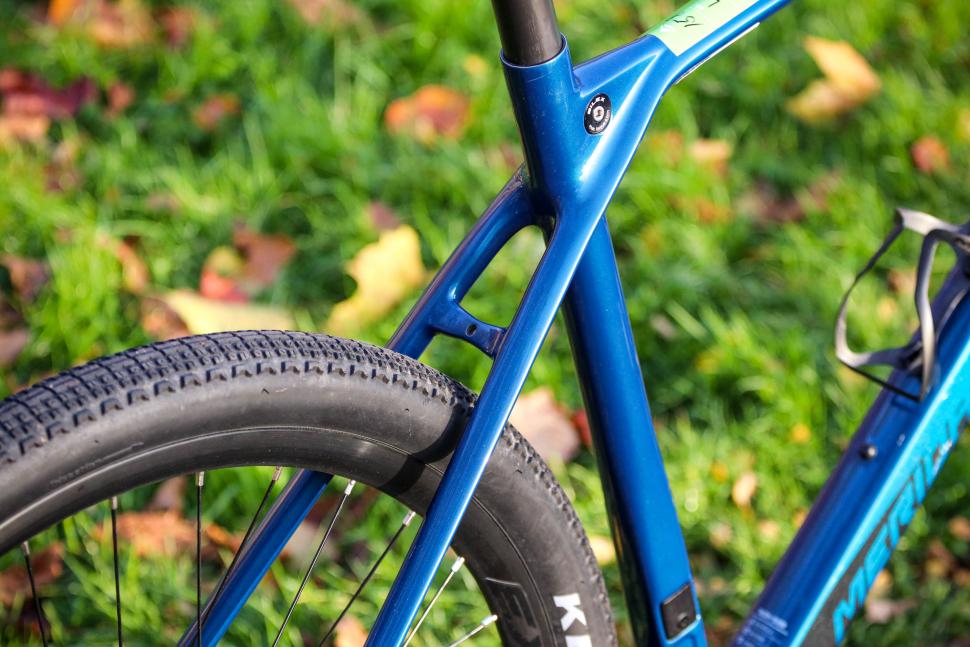








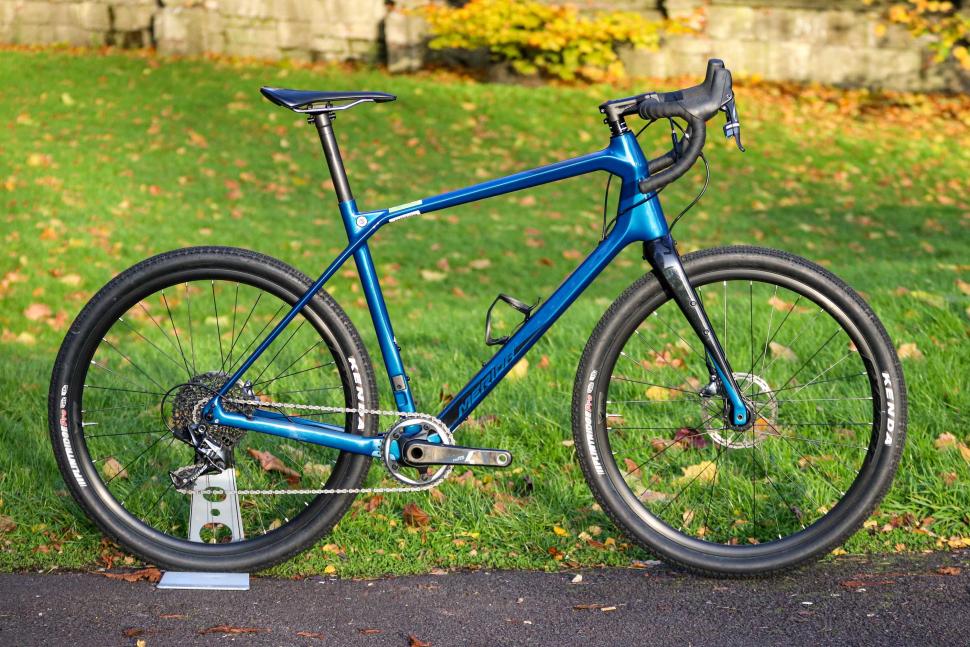





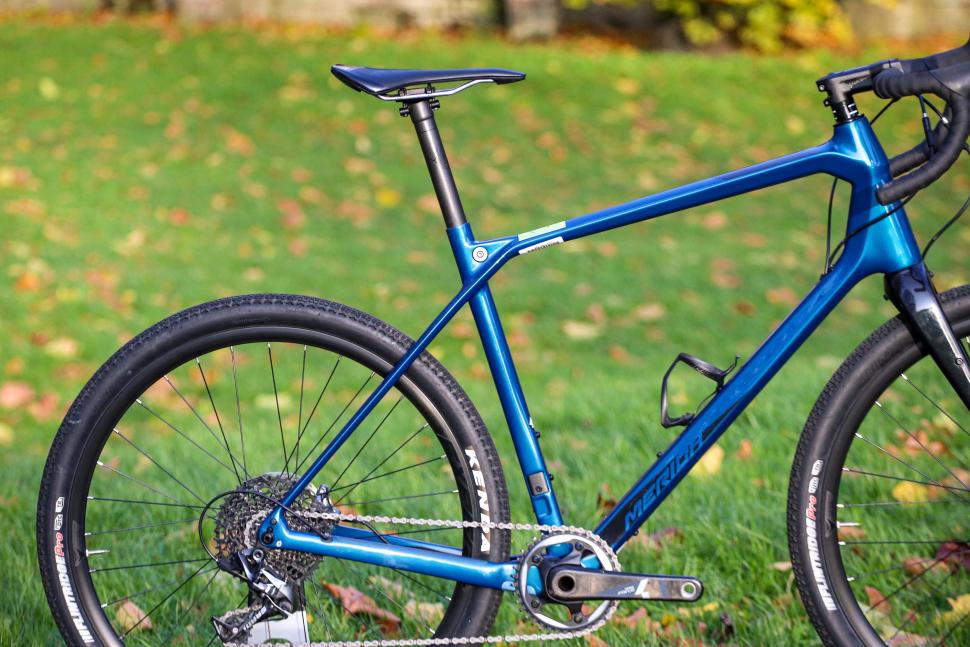



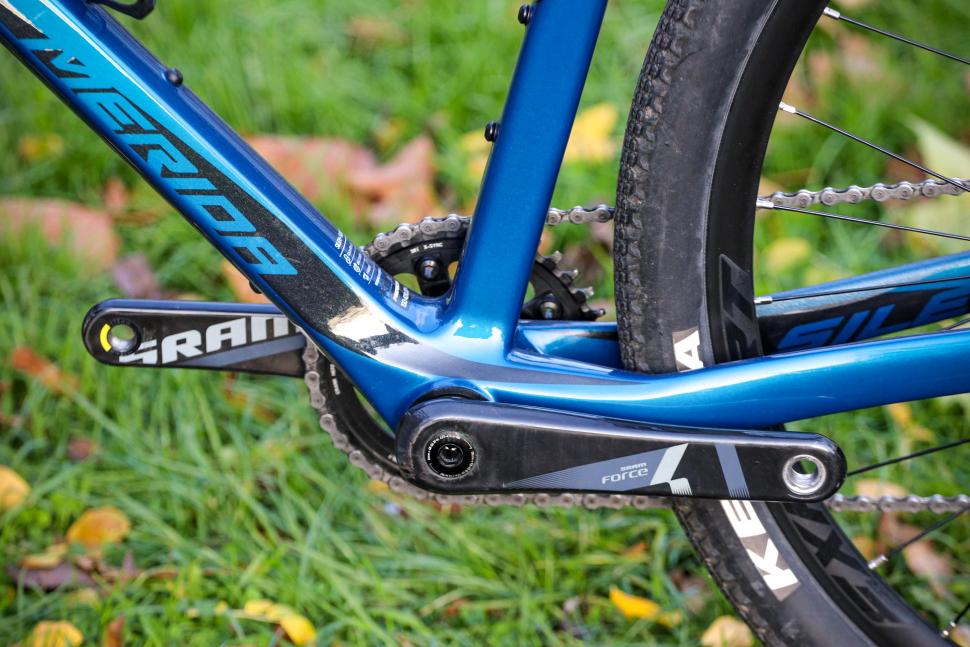

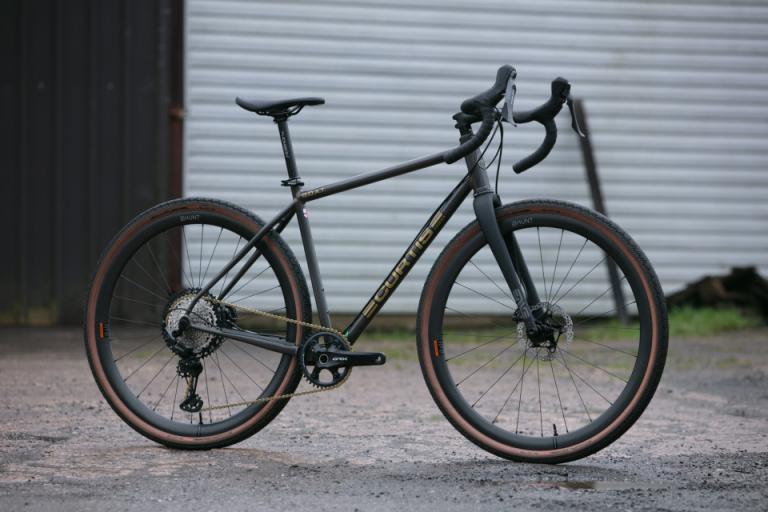


Add new comment
1 comments
I wouldn't say that if you want a low position you are necessarily out of luck. If you want a racey position in a road bike sense, then yes, but given the number of -17 deg stems that are available, it's possible to drop the bar height a fair bit from that with the stem supplied on the bike.
You might think that sticking a -17 deg stem on the bike makes a mockery/renders the high head tupe pointless, but I you still get the stiffness benefits.
I found that my small is actually a little on the short side - I think the swept back bar, short stem and tall headtube conspire to effectively reduce the reach to much less than the long top tube would imply the bike should have, and yet the bars were still above the saddle height (i.e. the bike was too small in reach, but the front height too big - a bit of an odd combination). The bars were also too narrow (although they might have changed them for the newer models) meaning that I didn't have the confidance to push the bike and make the most of the excellent handling.
Fitting wider bars with a bigger flair helped all of this, but what's really sorted it is switching back to a narrow-ish bar with an even bigger flair and much shallower drop, and fitting a slightly longer -17 deg stem. This means that on the tops I'm not far off my road bike position, but in the drops I'm slightly higher than when in same position on my road bike. Thus there is little difference in the position of my head/shoulders regardless of whether on hoods or drops, which it a much better set-up of this kind of bike (hence why there are a lot of super flairs, super shallow drop bars starting to appear).